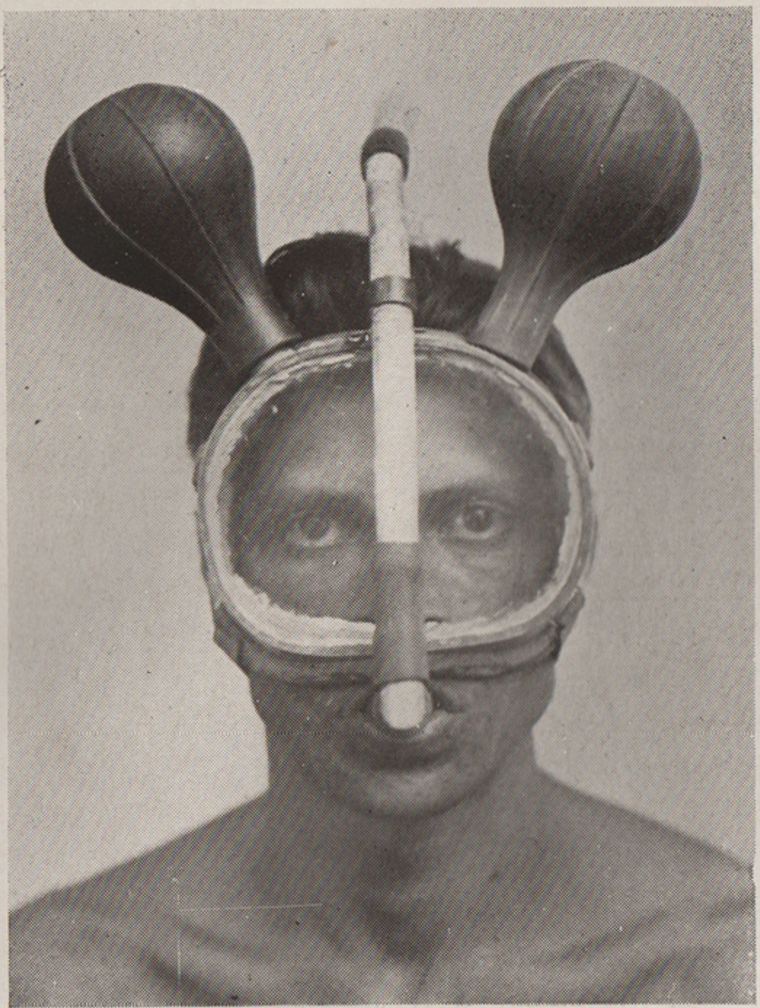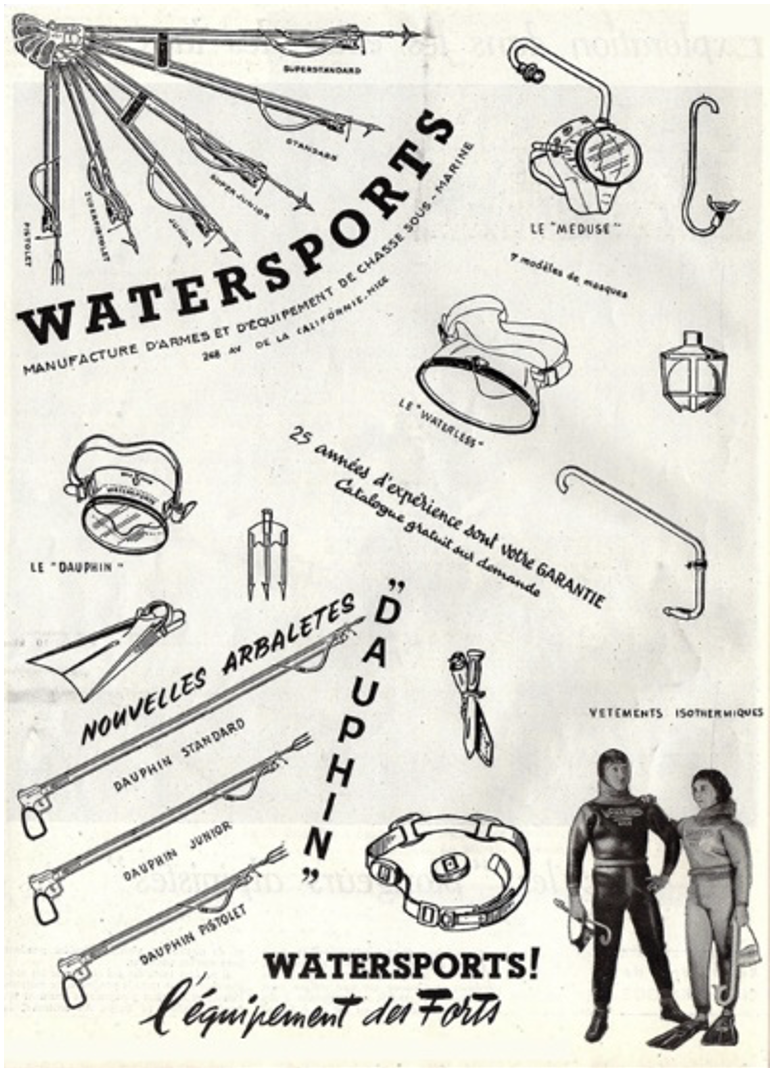In 1941, no fewer than four different underwater hunting equipment manufacturers operated within the French Riviera city of Nice: Douglas, Fusido, United Service Agency and Watersports. Mostly English-sounding nomenclature, perhaps because affluent British tourists historically flocked to Nice with its Promenade des Anglais seaside boulevard. The men behind these four enterprises were not only experienced manufacturers but also aquatic enthusiasts, distinguished hunters and passionate inventors.

Watersports was founded in 1940 by Roger Pulvénis (right), who migrated to Nice with his siblings from the Pacific Ocean Island of Mauritius and pioneered Mediterranean spearfishing in the 1930s. He and his brother Raymond jointly and somewhat belatedly filed French and Spanish patents in 1940 for a snorkel mouthpiece and a spring-action speargun. From the very first months of the war, however, the Germans banned Roger from manufacturing his spring-action speargun, which they considered dangerous in enemy hands, not least because it was a silent weapon!
Although Roger’s Watersports business swiftly resumed operations after hostilities ceased in France, a chronic dearth of raw materials blighted the early years of peacetime there. Back then, the Dunlop Rubber Company was charged with recovering and distributing all available rubber supplies, which came in a gaudy palette of hues including black, red and green. While this shortage lasted, Watersports manufactured a stunning range of “patchwork”-coloured masks for underwater hunters.
The 1957 Watersports advertisement on the left claimed 25 years of experience and captioned its products “l’équipement des forts” [strong people’s gear]. This publicity highlighted no fewer than nine spearguns, seven masks and a couple of breathing tubes. A pair of open-heel fins with adjustable strap and heel platform, a knife with its sheath, a weight belt and a couple of wetsuits completed the product display.

Two years later, Watersports was supplying the wherewithal not only for breath-hold aquatic activities, e.g. spearfishing, but also for scuba diving, which had become both Roger’s passion and all the rage on the Mediterranean. The most favoured client of the moment was the recreational diving tourist with deeper pockets than the thrifty local spearfisherman seeking seafood for the domestic table.
From the mid-1950s to the late 1960s, Watersports exported underwater swimming equipment to Western Europe and North America. Overwhelmed by fierce competition from other manufacturers, however, Watersports finally ceased trading in 1974, when Roger Pulvénis took a well-earned retirement in Nice.
____________